When it comes to home decor and trends, indoor plants are suddenly the belles of the ball.
We, needless to say (but we’ll say it anyway!) could not be happier about the massive uptick in #plantmoms and #plantdads, especially in our hometown of San Diego. For more than 40 years, it’s been our mission to encourage people to incorporate more nature (read: indoor plants) into the places they work, live, and play. Plants not only enhance indoor aesthetics, but also improve our mental health and offer therapeutic benefits.
Plants sometimes have similar symptoms for very different reasons. It just takes time to learn and identify what type of care your indoor plant may need.
Yet, no matter how good of a #plantparent you might be, once plants settle into their new homes, tragedy can strike. Even the greenest of thumbs who give their plants love, attention and just-right care can run into trouble. You notice your once-vibrant plant baby isn’t so green and fresh anymore. Maybe the leaves are turning yellow, or falling off. Or maybe the stems limp. What can you do to save your indoor plant? Read on to learn how.
Is it possible to revive a dying indoor plant?
Yes, you should give it your best attempt. Plants are living and like people, they have an inherent desire to survive. Reviving a plant you think is on its last legs – or roots – is satisfying. And even if it doesn’t make it, you’ll know you tried (and might have learned something for next time).
Our horticultural technicians care for thousands of plants for our clients. When they see a plant isn’t doing so well, first they do a diagnosis to figure out what’s wrong so they know what kind of fix is needed. Here are our tips, cultivated (so to speak) over decades of experience.
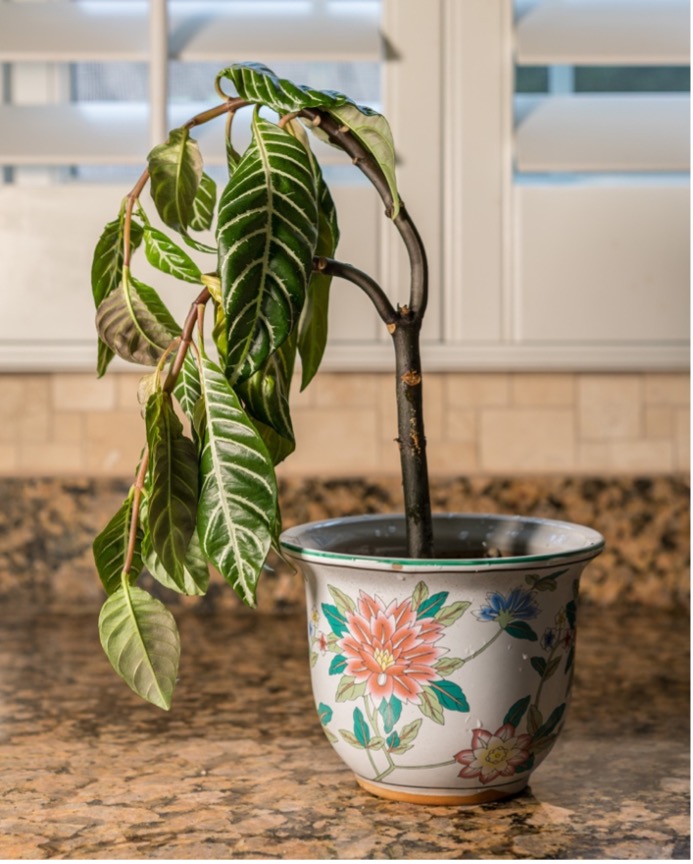
A house plant in need of care. Source: Adobe Stock.
#1 Symptoms: Limp leaves, droopy leaves and stems, brown or yellow leaves, leaf burn, or Wet soil.
Diagnosis: Overwatering.
Cure: Stop watering so much.
Your plant is drowning in water love. This is the number one reason indoor plants die. Wet soil will confirm that you’ve been overwatering.
If a plant is overwatered, the roots will rot and “watering it regularly” only makes things worse. Many times rotted roots allow a pathogen into the plant and soon enough, it’s a goner.
How to save it: Remove any obviously rotted roots and replace soil that has turned to mud. Allow the soil to dry until it is slightly damp to bone dry. Even then you might not be able to save it, but you will have done your best. You can check in on your plants’ health and get ahead of things with seasonal preparations, like these for winterizing your plants.
Pro tip: Group plants together according to their species. Not only does it look nice, but the plants will create a small microclimate with more humidity will benefit all the plants.
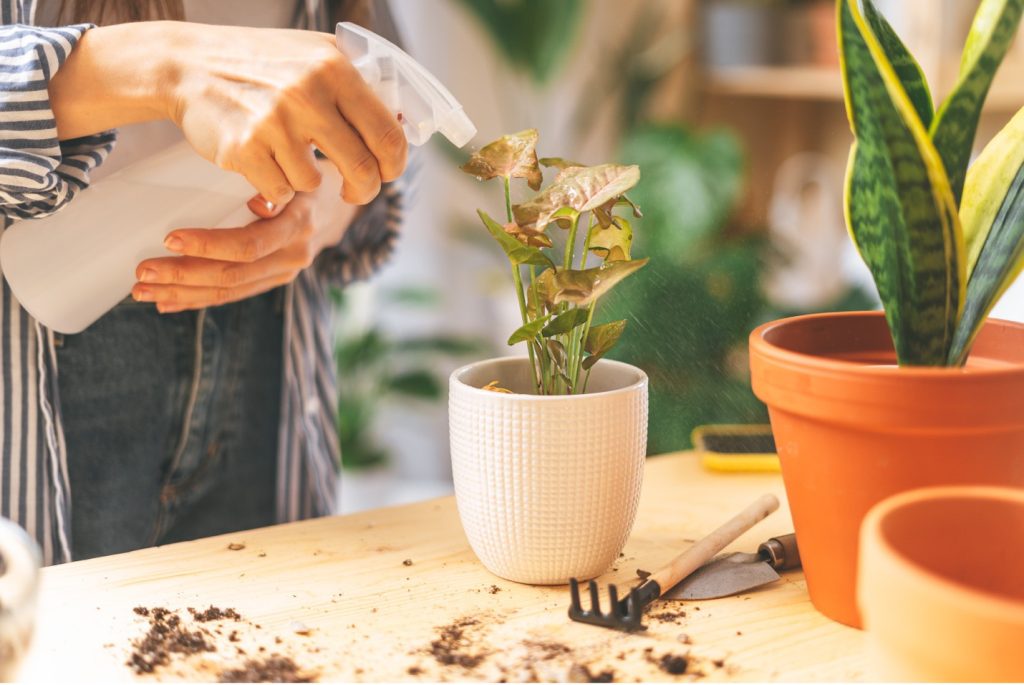
Person watering plant. Source: FreePik.
#2 Symptoms: Droopy, wilted leaves, brown leaves. Soil may be pulling away from the sides of the container.
Diagnosis: Underwatering.
Cure: Hydrate the plant.
If the plant is withering due to lack of water, hydrate the soil by putting the entire pot into a sink or bucket full of water for 15 to 30 minutes. If you water from the top, it will likely run down around the sides because the soil has become a hardened dry brick. Let it drain thoroughly and don’t let your plant sit in water for more than a day. Then set a calendar reminder to water – or get a plant that needs the bare minimum of watering, like a succulent.
Pro tip: From bromeliads to various species of succulents, pick from any number of our indoor plants whose water and light needs work well in San Diego and environs.
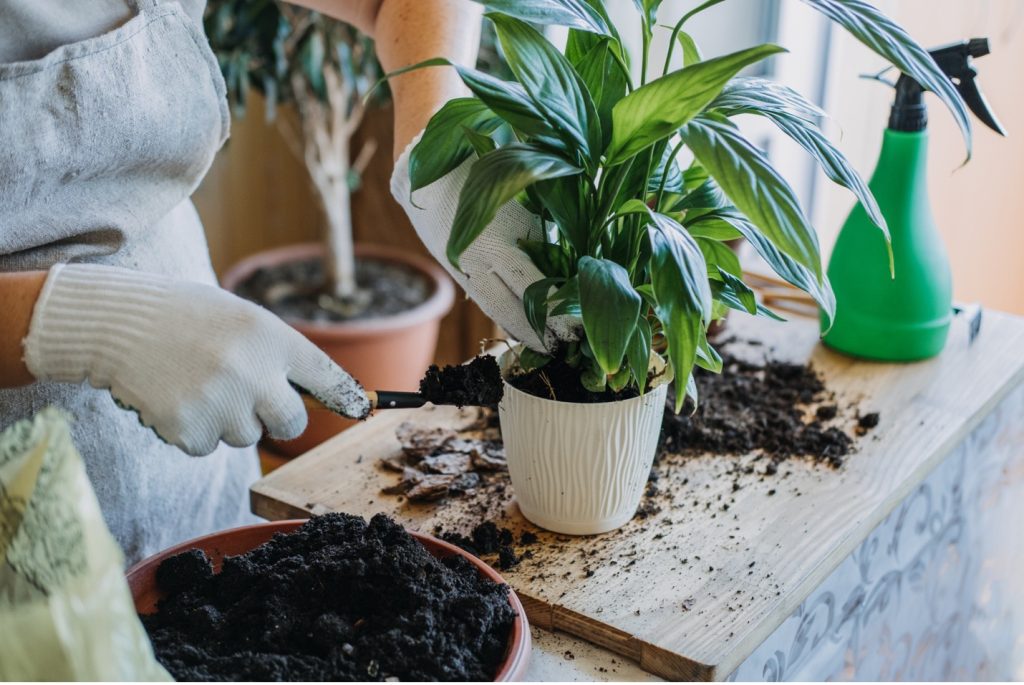
Person repotting a plant. Source: Adobe Stock.
#3 Symptoms: Yellow leaves, wilting leaves, roots on sides of pot or coming over edge or bottom of the pot.
Diagnosis: Pot-bound (or root bound).
Cure: Replant into fresh soil.
Everything needs a little room to grow, including indoor plants. If the plant is choked off because its roots are too crowded, you need to remove the plant from the pot, gently loosen up and separate the roots, and repot into fresh soil. This is also a great time to refresh your indoor plant style with a new planter or set of planters.
Pro tip: Choose a pot only slightly bigger than the one you are removing it from. Going too big too fast can create problems. From planters shaped as spheres to those made of recycled material, we’ll work with you to find the perfect planters to match or update your decor.
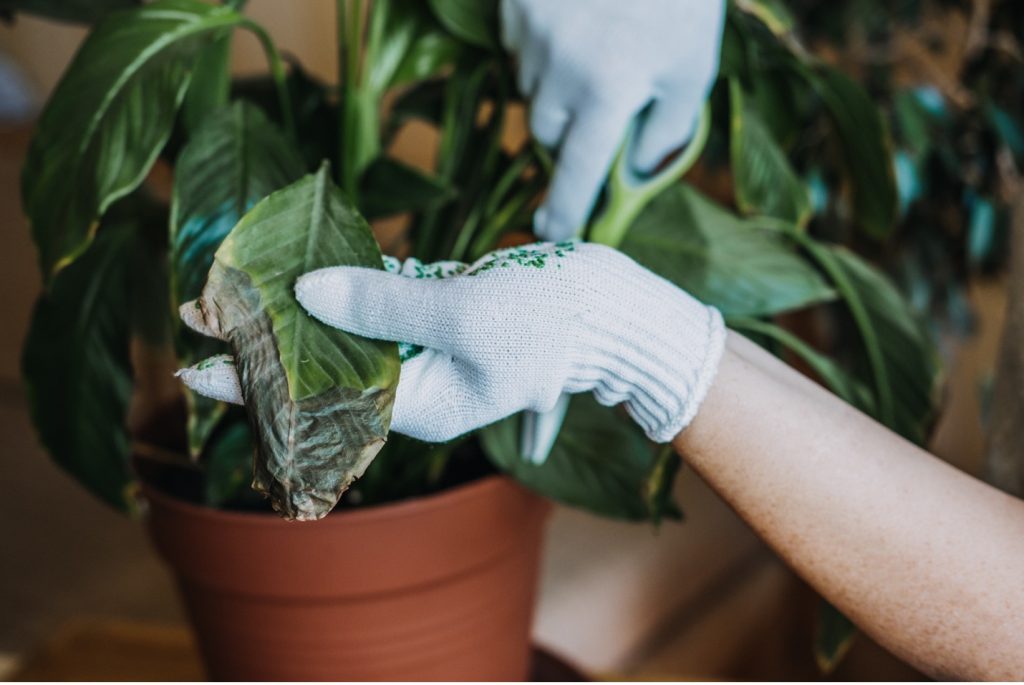
House plant with wrinkled leaves. Source: UnSplash.
#4 Symptoms: Wrinkly and wilted leaves, brown, dried leaves, leaves turning black.
Diagnosis: Too much sun.
Cure: Move into less harsh light.
A lot of us live in Southern California because of the year-round sunshine and warmer temps. But just like cake and beer, too much of a good thing can take its toll.
If you see dried brown to black areas on the leaves on one particular side of the plant, notice if it’s getting harsh midday sun from a nearby window. Your plant has serious sunburn and it’s scorched. Trim the leaves and move the plant out of the direct sun.
Pro tip: Always be careful of a plant grown inside being exposed to full sun. Shade grown plants can get sunburned very quickly.
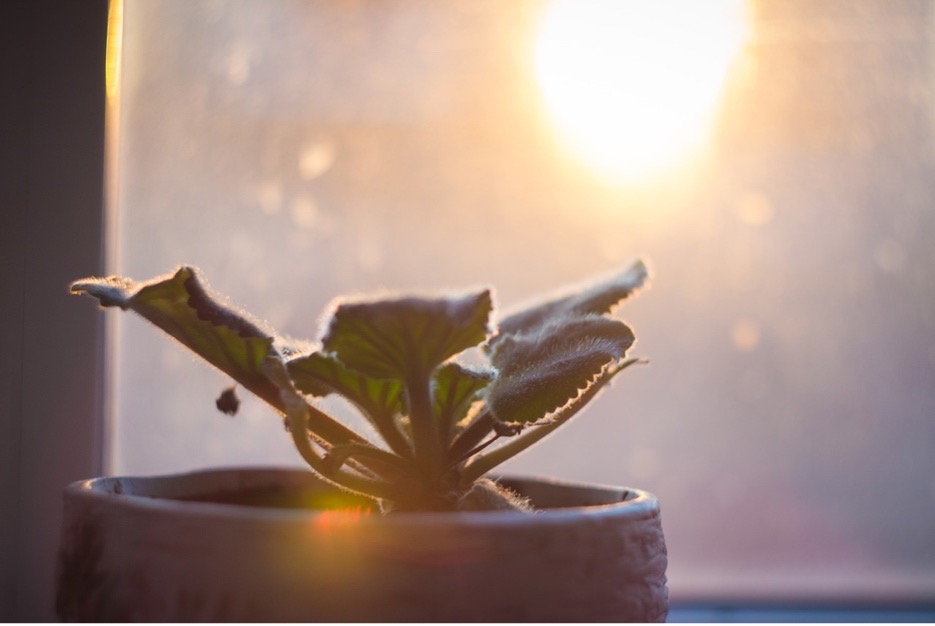
Plant directly in sunlight. Source: Yanoch Kandreeva/Creative Commons License
#5 Symptoms: Leaves slowly getting pale, elongating, turning yellow, leaves dropping off.
Diagnosis: Too little sun.
Cure: Give it more indirect light.
If your plant’s leaves are slowly turning yellow or pale, or dropping off, it may not be getting enough sunlight. Most hardy houseplants can tolerate a little abuse, but they need a minimum amount of sunlight to thrive. Bright indirect sun is the best place to start with your plants. Trying to grow a plant without adequate light is a sure fire way to fail.
Pro tip: If there isn’t enough light to read a book without turning the light on, it’s too dark for a plant to survive.
#6 Symptoms: Not growing, but doesn’t fit other diagnoses.
Diagnosis: Failure to thrive.
Cure: Check the growing conditions. Fertilizer may make it worse.
If your plant’s leaves are slowly turning yellow or pale, or dropping off, it may not be getting enough sunlight. Most hardy houseplants can tolerate a little abuse, but they need a minimum amount of sunlight to thrive. Bright indirect sun is the best place to start with your plants. Trying to grow a plant without adequate light is a sure fire way to fail.
Pro Tip: Before using any type of fertilizer or plant food, educate yourself on the right seasons to do, and how. Fertilize no more than 3 times a year for indoor plants.
Another Option: Bring in the professionals! Do you hire people to change your oil or groom your dog? Call Good Earth Plant Company, we will be happy to keep your plants healthy and thriving. You can take all the credit.
